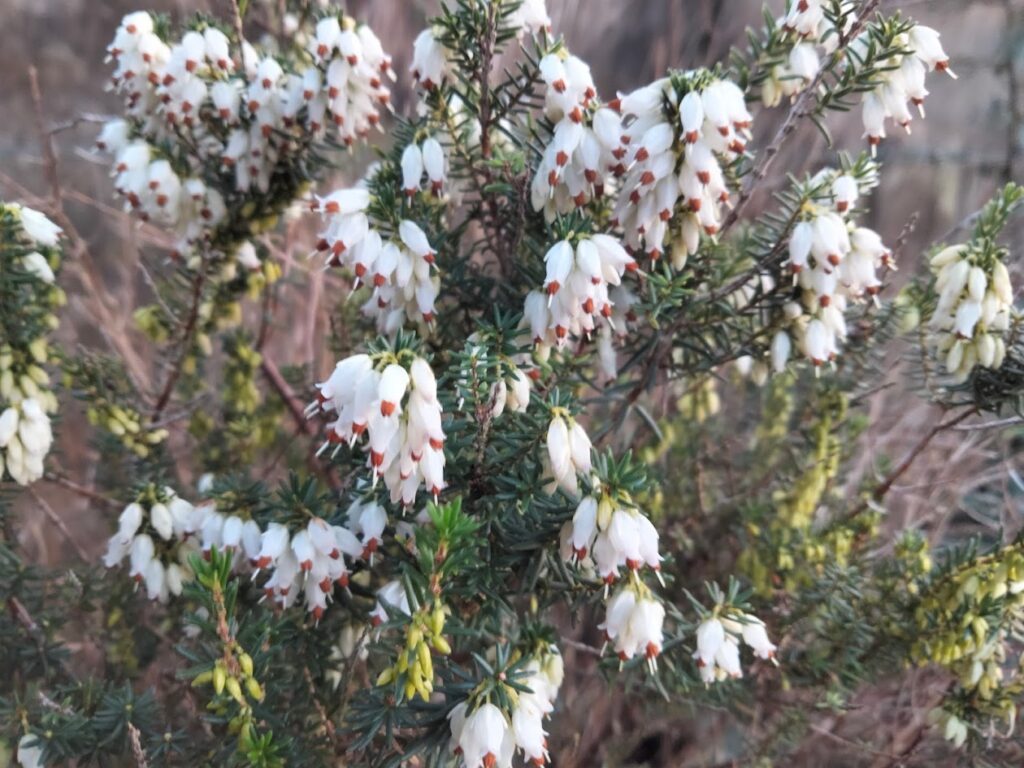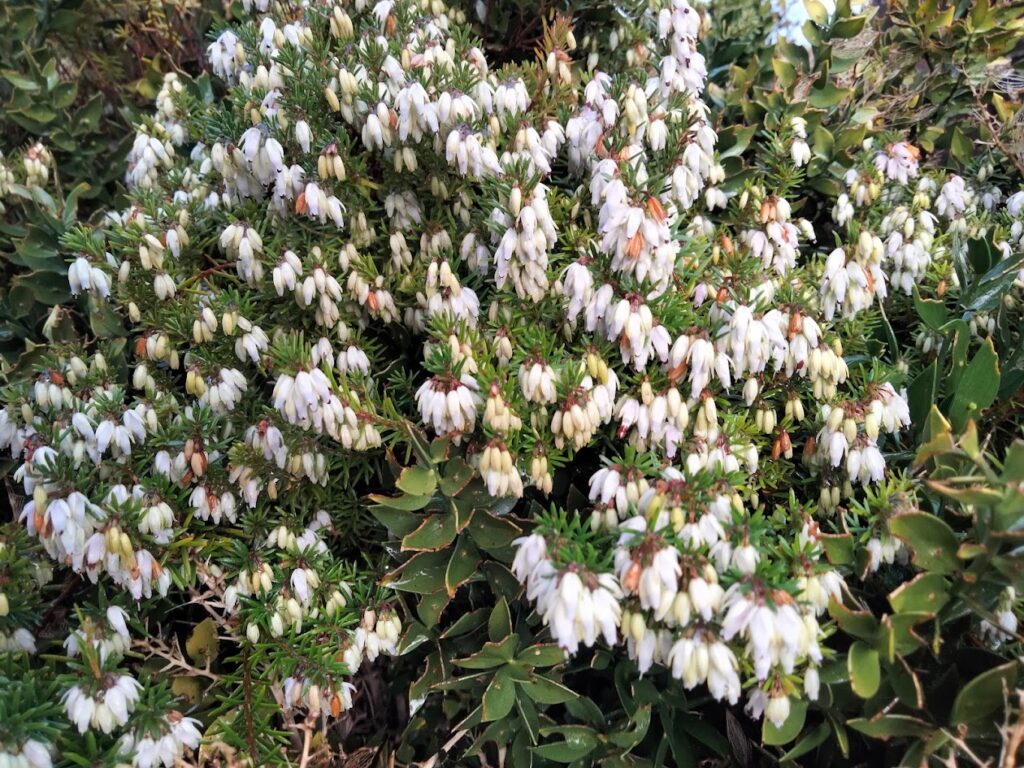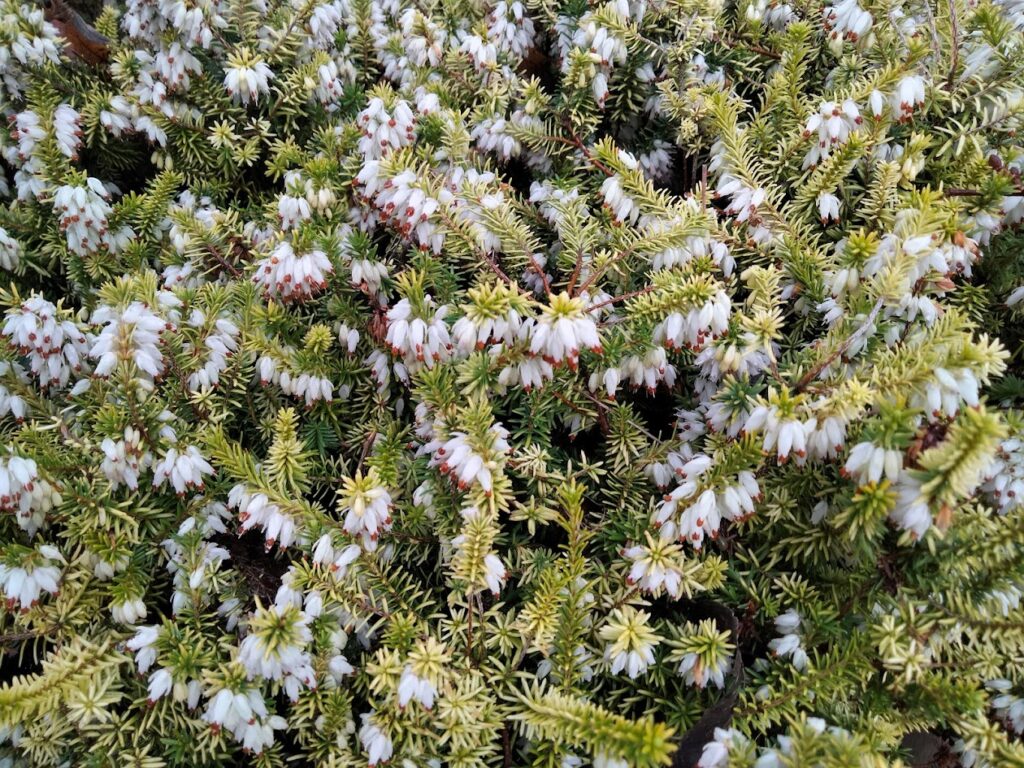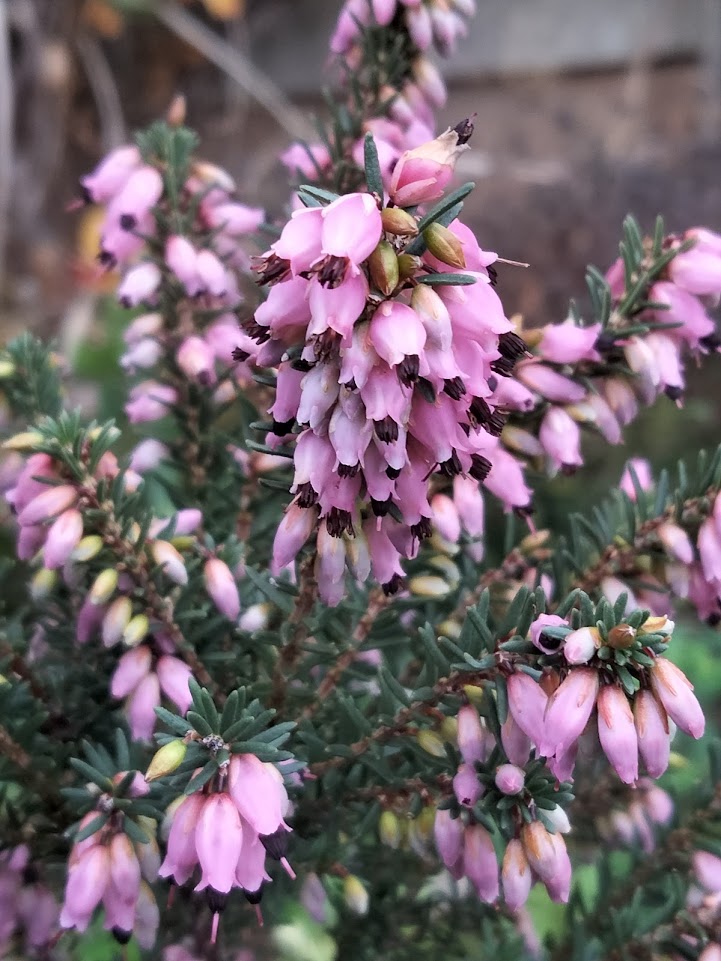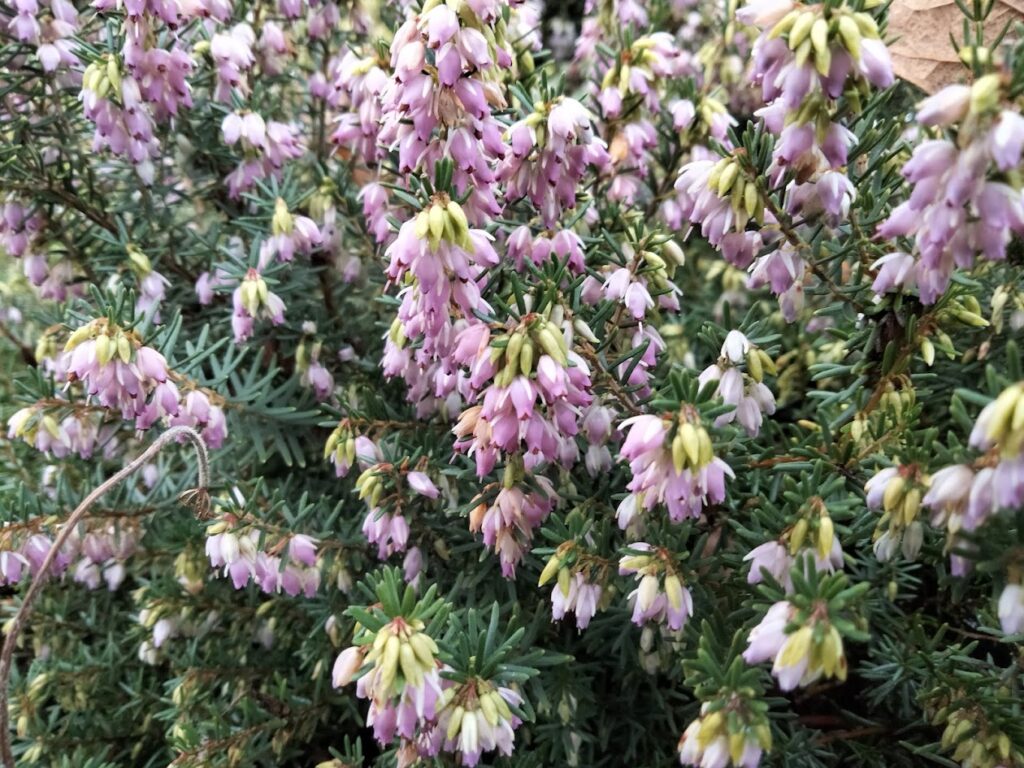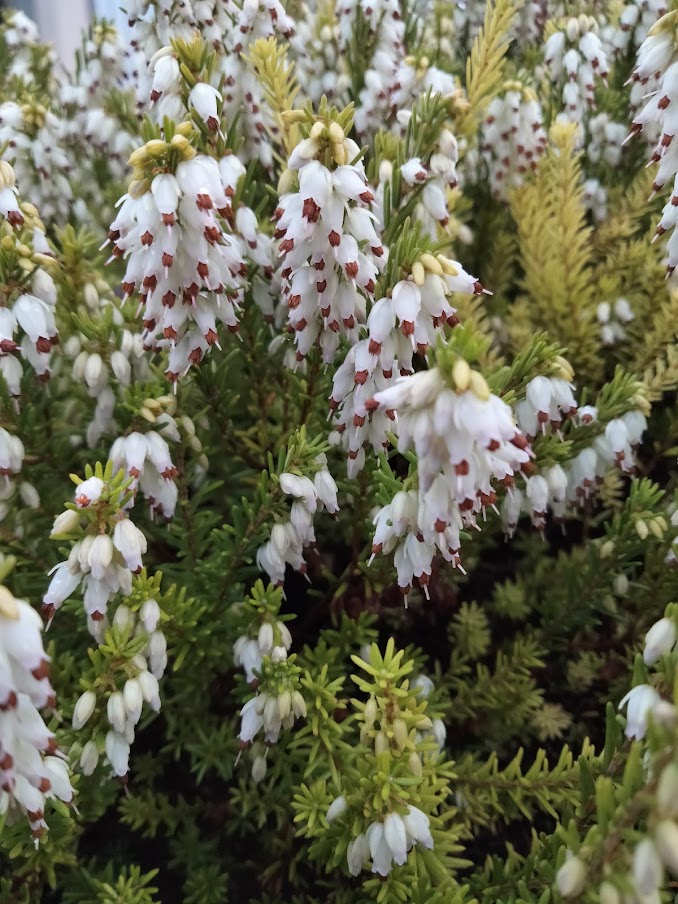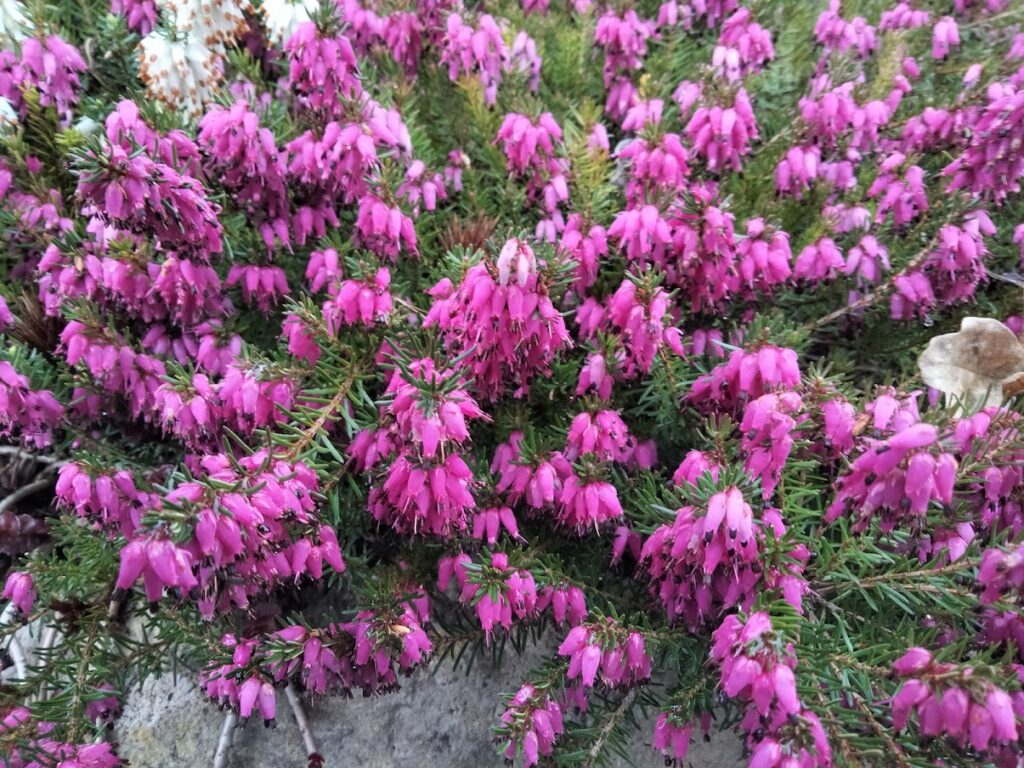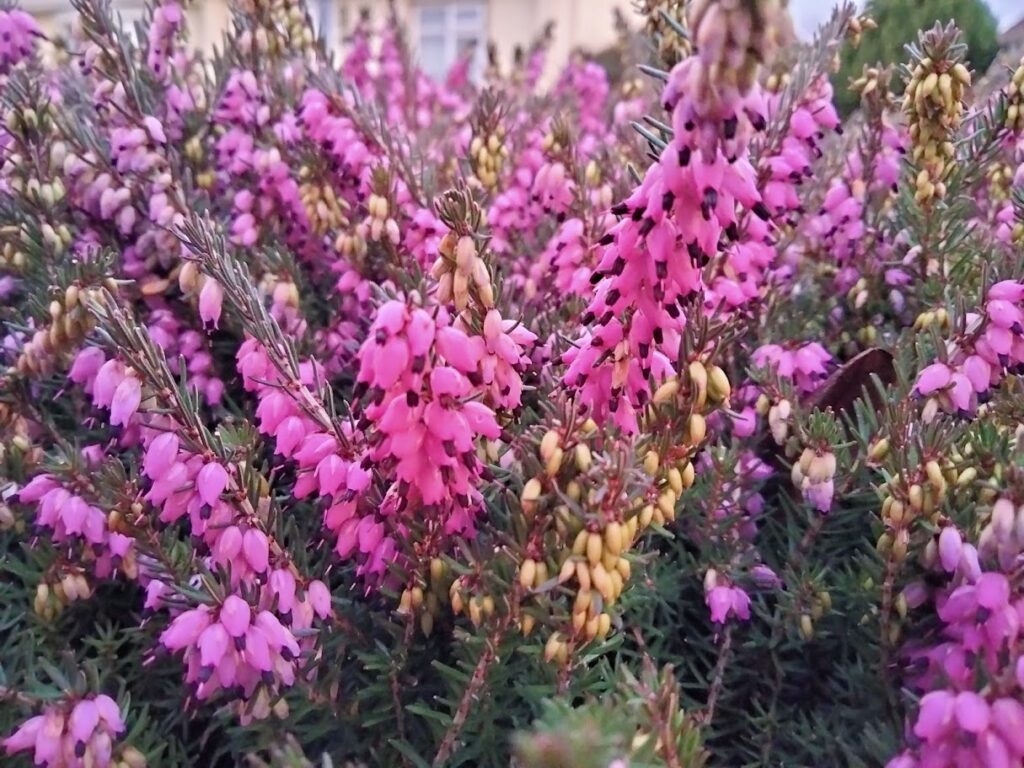Heathers – Part 1
Winter flowering heathers are maybe one of the best sources of nectar for our native pollinating insects during the winter months. These plants quite often overlooked and given bad press for being boring. However, if you have the right soil (ericaceous) its is likely that you can grow these very rewarding winter flowering shrubs.
These compact evergreen/gold shrubs with small needle like foliage and clusters of tiny bell-shaped flowers. These shrubs start flowering from early December through to about late March/ April. Providing a wonderful source of nectar, when nectar is scarce in our mild winter that we tend to have these days and bring colour in our gardens at a much-needed time of year.
The flowers on heathers are small and bell shaped but there are just loads of them on the stems that carry them. Interesting to note that the anthers poke out the bottom of the bells and are either tan/brown or black with a spot of yellow for the pollen. The flowers themselves are white, pink and dark pink/red. The flowers occur on the current season’s growth. (That growth made this year)
These small shrubs prefer to grow in full sun but they will tolerate partial shade but tends to elongate the growth a little. They tend to prefer acidic soils that are humus rich and free draining. If you don’t have acidic soils then you can help achieve this by digging horse manure and mulch with horse manure. You can also use composted conifer and pine needles to create acidic soils. Using a mulch of acidic (ericaceous) compost from the garden center will also help. Feed with a liquid feed designed for ericaceous plants or said well-rotted horse manure. I do tend to find that most need nothing especially once these plants are mature.
These are incredibly easy plant to care for. All they need is after flowering (when the flowers have gone brown) to be trimmed off to below the flower spikes and shaping your plant at the same time.
If you wish to try propagating these shrubs then you can layer them or take semi ripe cutting in August.
For the winter flowering heathers there are three types, Erica carnea, Erica Erigena and Erica x darleyensis.
Erica carnea, grows to around 10-20 cms high with a spread (depending on variety) up to 60 cms. They are excellent at front of a border or in their own heather bed. There are some lovely varieties like Erica Vivellii, pink spangles, springwood white, golden startlet, Bells extra special to mention just a few
Erica Erigena, grows once mature to around 30-60 cms high and wide and in some varieties taller. Some notable ones of these are Erica Erigena, WT ratcliff, Irish dusk, Brightness and superba.
Erica x darleyensis is a cross between Erica carnea and Erica Erigena and provides and excellent plants the grow between the two. These grow up to 45 cms high and 30-60 spread. Some good ones of these are Erica x darleyensis Darleydale, white perfection and Kramers red.
These days there are a whole myriad of cultivars available through the internet, garden centers and nurseries. These are a worth while plants to grow and warm our winters with their cheerful flowers.
Below is a gallery of pictures relating to January
